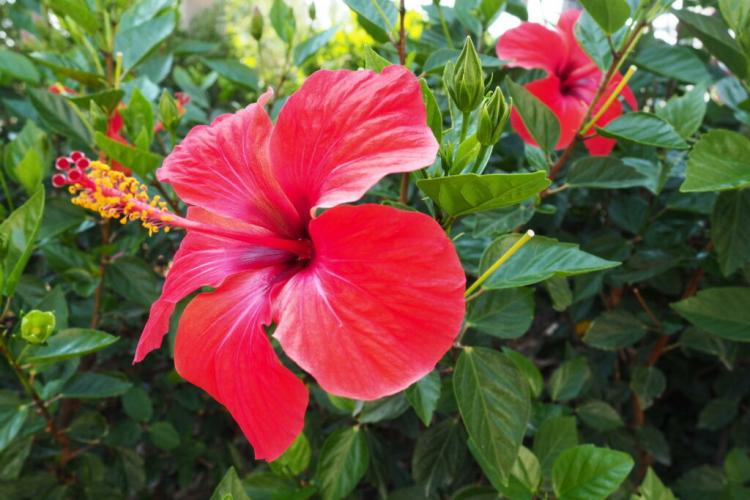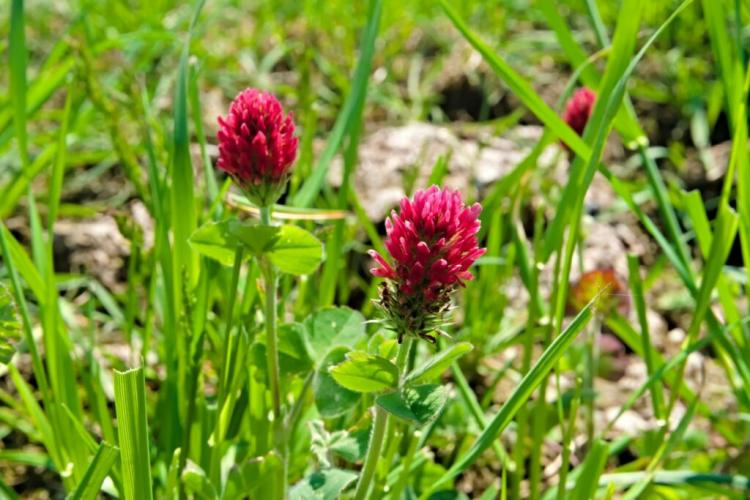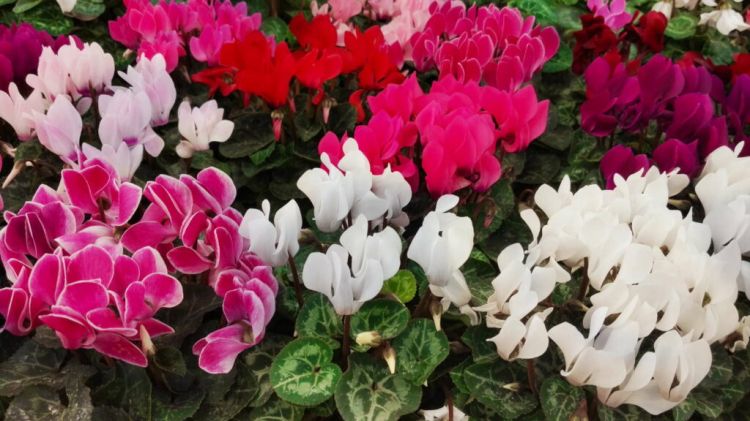Roses Climber: Location, Care And Robust Types
Roses climber is very impressive in growth height and abundance of flowers. You can find out here what to consider for cultivation and care in your own garden.
Climbing roses not only offer an unbelievable variety of colors and shapes of flowers and leaves, they can also be used to turn the smallest garden into a personal recreation paradise.
After all, the plants want to grow upwards above all else. But for the rose arch or the house facade to become a flowery symbol of pure Romanesque, nature needs a little help. The right shaping, pruning, and care are rewarded with an abundance of flowers and dense growth.
Plant climbing roses
Table of Contents
With the right care, roses climber can live for several years and can reach heights of up to 6 meters. Therefore a little more time should be invested in planning and finding a suitable location. Not only because of the well-considered choice of a location allows your plant to thrive.
Rather, it prevents you from having to start saving again within a short time in order to move the rose (pink) that has become too large to a new location. This not only causes stress for the plant, but also for you.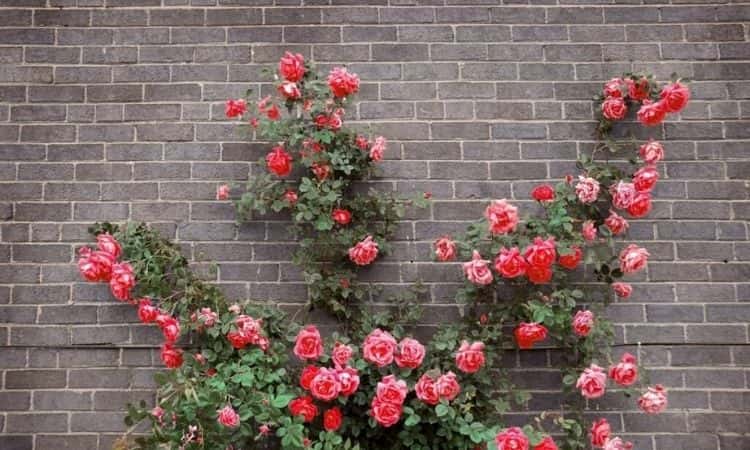
Location for roses climber
Those who grow meters high in the sky like lots of light and fresh air. When choosing a location for your climbing roses, you should therefore make sure that there is enough space at the top. An airy place ensures that no heat is trapped and that wet parts of the plant dry off. This way you will have fewer problems with pests and fungal infestation later on.
But not only fresh air is desired – the noble plants like extensive sunbathing at least as much. Only a few varieties tolerate half-shaded locations. But full sunshine is too much of a good thing. It is best to keep nice south-east or south-west spot in the garden free for your climbing roses. But climbing roses do not only grow high up in the sky but also deep into the earth.
Loose soil is therefore the key to climbing roses. The long roots grow very deep, so the soil must be permeable. Make sure that there is no compaction in the soil at least one meter deep.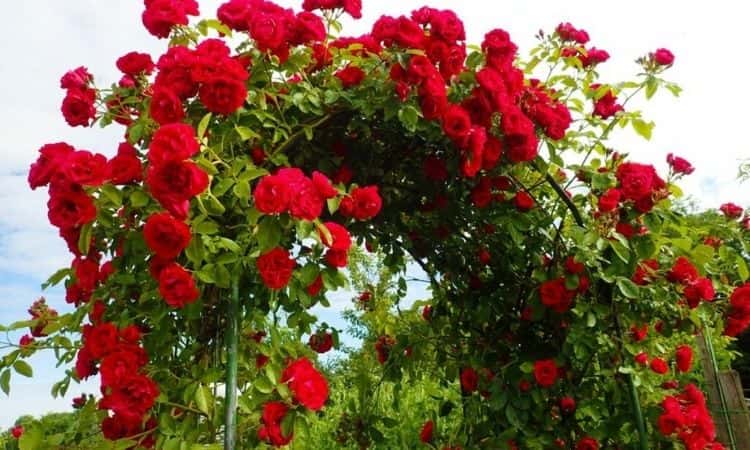
Otherwise, the same applies to the ground for climbing roses:
- Nutrient-rich.
- Sandy-loamy.
- Humus.
- Deep (min. 50 cm).
- Medium to heavy.
- No waterlogging.
- Neutral pH.
If these conditions are met, climbing roses can be used in a variety of ways. Whether with practical added value as privacy protection or simply as an optical highlight in the garden. Fragrant varieties on house facades, pavilions, or old tree trunks are particularly suitable for creating your own personal favorite spot.
Climbing roses in a pot: Is that possible?
Climbing roses in a pot can also grow towards the sun. However, only small varieties are suitable for this and even these like it airy underneath. The pot should therefore be at least 50 cm deep and as wide as possible. There are also a few things to consider when caring for the pot:
- Place the root ball in water 24 hours before planting.
- Soil: Rose soil mixed with compost or slow-release fertilizer.
- Fertilization: April – July every 14 days with liquid fertilizer in watering water.
- Pouring: no waterlogging; good drainage layer at the bottom of the pot.
- Repotting: Every 2 – 3 years into a larger pot.
Climbing roses: the right planting time
Here it depends on the condition in which the plants were bought. Bare-rooted roses are planted in the ground either in autumn or in spring. Potted roses can also be planted in summer.
In addition, the root ball of container roses is better developed, the first flowers are often already visible and the planting distances can be better estimated. The distances are not only determined by the natural growth of the plant, but also by the shape you later wish to have.
In this case, 30 to 50 cm from the climbing aid or 8 cm from the wall must be observed. Depending on the variety, a distance of one and a half to two meters should be kept between the plants.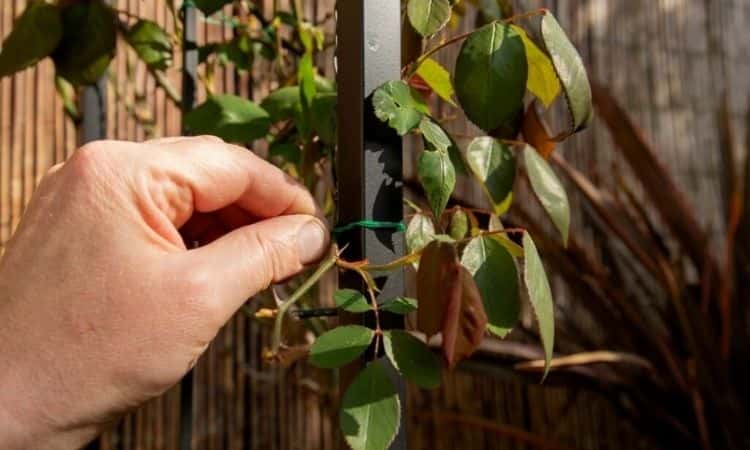
Otherwise, the following must be observed when planting climbing roses:
- The root ball is placed in water 24 hours before planting
- Loosen up the soil to a depth of 50 – 100 cm
- Planting hole: 30 – 40 cm depth
- grafting place lands during planting about 5 cm under the ground
- Pour on well
Replant climbing roses
Climbing roses are not a short-term purchase. With the right care, they can grow and flourish for years. It can happen that the surrounding vegetation will eventually take away the light and space from the plants. Exactly then it is time for the high-flyers to move.
The best time for this is a mild, frost-free day in autumn after the plant has shed its leaves. It is also possible to replant in spring when the plant has not yet sprouted again. However, the plants will not grow as fast as in autumn.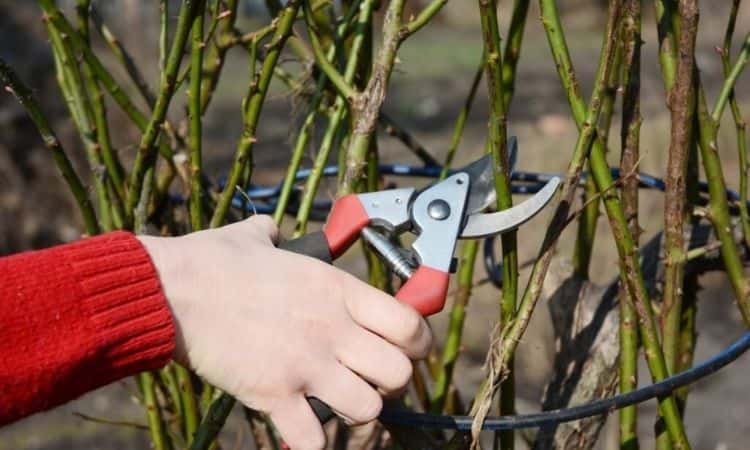
Once you have found a new place for the climbing rose, simply proceed as follows:
- Prepare the planting hole at the new location
- Strong pruning of the climbing rose to be replanted
- Dig a trench with a spade (at least 2 spade lengths deep) around the rootstock
- Carefully lever out the plant
- bruised and damaged roots are removed
- Water the planting well at the new location
- accumulation of soil at the base of the plant (protection against dehydration)
Strong pruning means cutting back the plant to a few sleeping eyes. The ditch around the climbing rose to be replanted should be dug as deep as possible because of the deep roots of the roses. The more generously you dig, the less damage you do to the rootstock.
Fixing climbing roses correctly and securely
No matter which climbing rose you choose, a climbing aid is always mandatory. In order for it to fulfill its purpose, you must pay special attention to its attachment. If the construction is well prepared against the wind, rain, and the weight load, the greening can be tackled.
The shoots are fastened differently depending on the type of climbing aid. The shoots are placed spirally around the climbing frame on climbing columns. On trellises, the long shoots are tightened fan-shaped or crosswise. Then the shoots are loosely attached with bast, plant clips, or rubber-coated wire.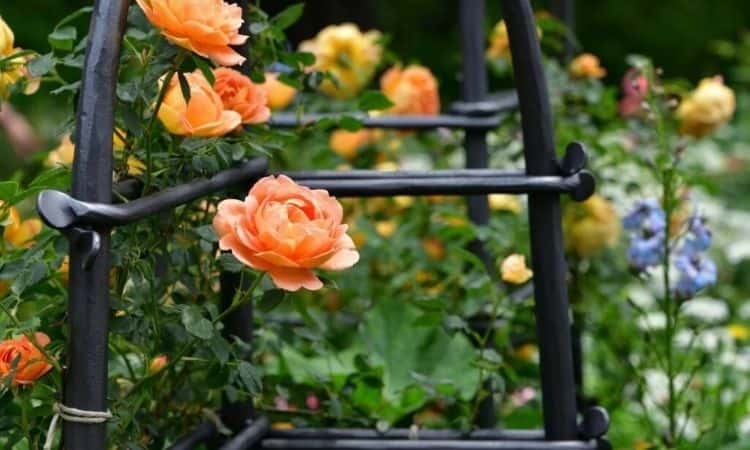
Climbing roses: Suitable species
Which type of climbing rose you choose depends on what you expect from the flowering climbers later on. The actual climbing roses offer:
- Multiple flowering
- Growth height: 1.5 – 3 meters
- Thick, upright shoots
- flowers single or in clusters
- More compact growth
- Larger flowers
Who wants to go higher, decides for Ramblerrosen. These are characterized by:
- Single flowering
- Growth height: 6 – 10 meters
- Good vigor
- Medium-strong and elastic shoots
- Many small flowers
Thanks to intensive breeding, there are now also Rambler rose varieties that flower several times a year. But the number of flowers is not quite as impressive.

Roses climber: the most beautiful varieties
Depending on the variety, climbing roses bloom in white, salmon, orange, and shades of pink or red. They also differ in the shape of their flowers. There are simple to strongly double flowers.
Here are a few especially beautiful, more often flowering climbing rose varieties for you:
- Compassion: double flowers in light salmon pink; strong fragrance; growth height: up to 2.5 meters; flowering: June – November; hardy; ADR rose.
- Florentina: double flower in intense red; light fragrance; growth height: up to 3 meters; flowering: June – September; hardy.
- Moonlight: semi-double flower in lemon yellow; strong fruity fragrance; growth height: up to 2.5 meters; flowering: June – September; hardy.
- Elf: double flower in cream yellow with green shimmer; delicate fragrance; growth height: up to 3 meters; flowering: June – September; conditionally hardy; ideal for sunny locations
- Aloha: Heavily double flower in apricot; strong fragrance; growth height: up to 2.5 meters; flowering: June – October; limited winterhardy.
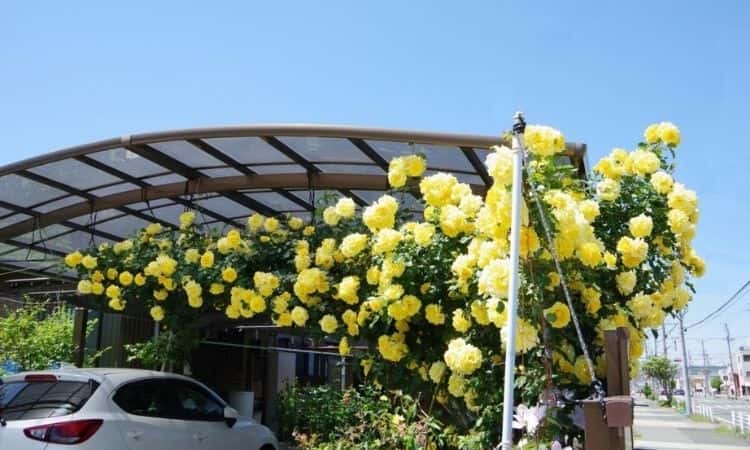
Care for climbing roses
The rose is also considered the queen of flowers. The older climbing roses become, the more beautiful and lush they bloom. But for your plants to shine in majestic splendor year after year, care must be right. The following must be observed:
- Watering: Frequently during the growing season, then only after long dry periods.
- Cleaning out wilted flowers.
- Removal of sick and broken plant parts.
We only water from below to minimize the risk of fungal infections on the leaves. Furthermore, we do not water in the blazing midday sun. After heavy watering or rain, the soil around the roots is loosened. This prevents the soil from compacting and the roots get enough air again.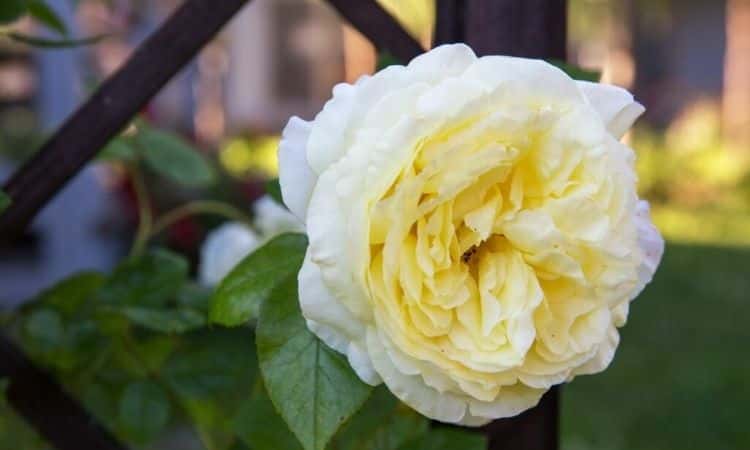
Fertilizing climbing roses
A queen must also be served royally. Like Marie-Antoinette, climbing roses must be the finest and in proper quantities. This is why special rose fertilizer is available on the market, adapted to the majestic nutrient consumption. It is also possible to use a different fertilizer.Cattle dung, for example, would be a cost-effective alternative. Just make sure that an organic fertilizer variant ends up in the shopping cart. This has a longer depot effect in the soil and is also more environmentally friendly than the mineral alternatives.
Roses climber is fertilized twice a year:
- At the beginning of April
- End of June after flowering
The fertilizer is carefully worked into the loosened soil around the roots. For freshly planted roses, fertilization is not necessary for April. They are fertilized for the first time after the first flowering.
Prune climbing roses
By pruning your plants, you promote the formation of new flowers and beautiful branched growth. For this purpose, newly formed side shoots are cut back once a year to a length of 2 to 5 eyes.
The cut is pruned diagonally about 5 mm above a bud growing outwards. The time for pruning depends on whether you have chosen a single flowering or multiple flowering varieties.
- Spring: More often flowering climbing roses
- Autumn: once flowering climbing roses (after flowering)
In plants that flower once, only shoots that have previously borne flowers are removed. The rule here is: less is more. In the case of more frequent flowering varieties, pruning may only be carried out when there is no longer any danger of frost. In addition, 1 – 2 main shoots are removed per year.
The remaining, new shoots are pulled along the climbing aid and attached. Irrespective of the variety, you should regularly clean out wilted flowers and remove diseased plant parts or those damaged by winter, for example. Shoots of the wild rose rootstock should be removed, otherwise, they will overgrow your beautiful English Rose.



